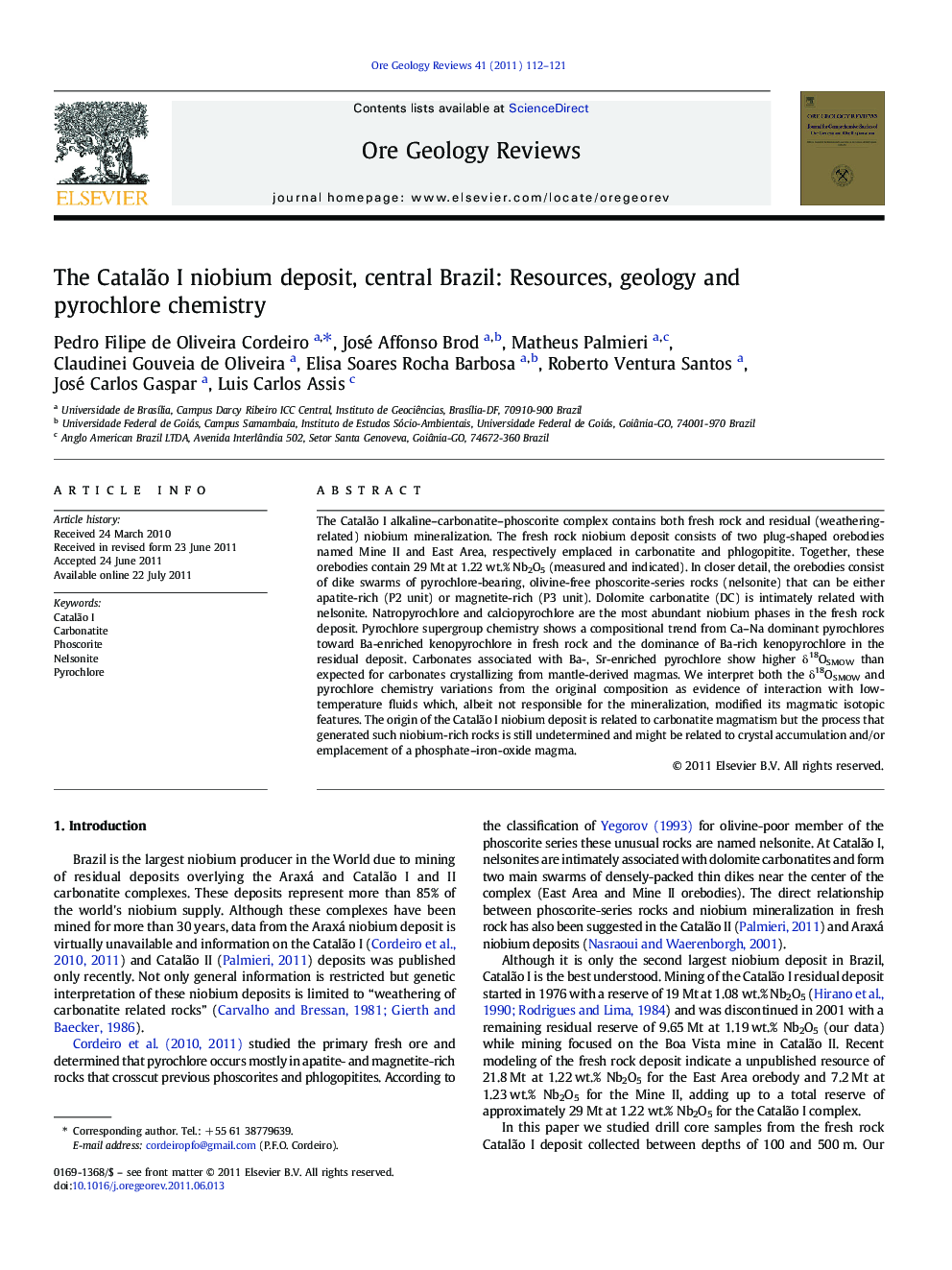| Article ID | Journal | Published Year | Pages | File Type |
|---|---|---|---|---|
| 4697692 | Ore Geology Reviews | 2011 | 10 Pages |
The Catalão I alkaline–carbonatite–phoscorite complex contains both fresh rock and residual (weathering-related) niobium mineralization. The fresh rock niobium deposit consists of two plug-shaped orebodies named Mine II and East Area, respectively emplaced in carbonatite and phlogopitite. Together, these orebodies contain 29 Mt at 1.22 wt.% Nb2O5 (measured and indicated). In closer detail, the orebodies consist of dike swarms of pyrochlore-bearing, olivine-free phoscorite-series rocks (nelsonite) that can be either apatite-rich (P2 unit) or magnetite-rich (P3 unit). Dolomite carbonatite (DC) is intimately related with nelsonite. Natropyrochlore and calciopyrochlore are the most abundant niobium phases in the fresh rock deposit. Pyrochlore supergroup chemistry shows a compositional trend from Ca–Na dominant pyrochlores toward Ba-enriched kenopyrochlore in fresh rock and the dominance of Ba-rich kenopyrochlore in the residual deposit. Carbonates associated with Ba-, Sr-enriched pyrochlore show higher δ18OSMOW than expected for carbonates crystallizing from mantle-derived magmas. We interpret both the δ18OSMOW and pyrochlore chemistry variations from the original composition as evidence of interaction with low-temperature fluids which, albeit not responsible for the mineralization, modified its magmatic isotopic features. The origin of the Catalão I niobium deposit is related to carbonatite magmatism but the process that generated such niobium-rich rocks is still undetermined and might be related to crystal accumulation and/or emplacement of a phosphate–iron-oxide magma.
► The Catalão I niobium deposit is the last stage of carbonatite magmatism in the complex. ► Pyrochlore group minerals are restrict to natropyrochlore, calciopyrochlore and kenopyrochlore. ► Dolomite and pyrochlore chemical variations indicate interaction with post-mineralization low-temperature fluids. ► The deposit genesis is related to crystal accumulation and/or emplacement of a phosphate–iron-oxide magma.
